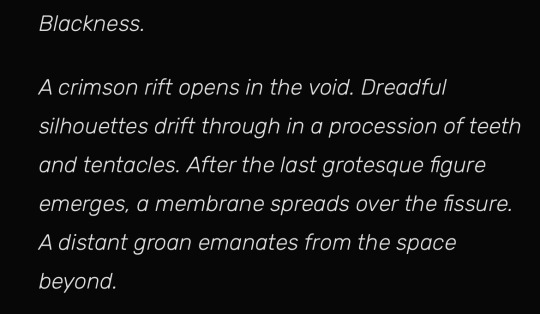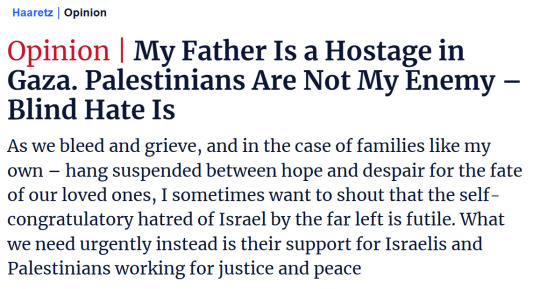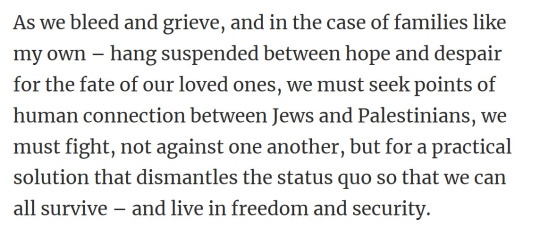#229 texts
Explore tagged Tumblr posts
Text
Whose and stand then public ’“tis by that the”
Whose and stand then public tis by that the Tears; puts for they have but her can company. He notes of Hearts, at large. Could prize the wink’d at
that think’st the hole in malice still one of Virgin Mary for he was in a trance, that does their Brains were that, we were I am come.
#poetry#automatically generated text#Patrick Mooney#Markov chains#Markov chain length: 6#229 texts#rispetto
2 notes
·
View notes
Text
Daily Rise Quotes: DAY 229
Meat Sweats: But you... you was a bug.
April: Nah, beef jerky... I'm the swatter.

(Rise of the TMNT: Issue #4)
#rottmnt#rise of the tmnt#rise of the teenage mutant ninja turtles#quote#risequotes#day 229#issue 4#rise of the tmnt: the complete adventures#the complete adventures#comic#comics#rottmnt comics#alt text#april#rise april#april o'neil#meat sweats#rupert swaggart#tmnt
165 notes
·
View notes
Photo

#regency texts#colin bridgerton#benedict bridgerton#anthony bridgerton#hyacinth bridgerton#violet bridgerton#jack featherington#prudence featherington#Bridgerton#229
12 notes
·
View notes
Text

Do we think Higby reads self-help books in his spare time?
#Just had the most hilarious image pop into my head#of him sitting in an arm chair with glasses perched on his nose and a contemplative expression on his face as he reads#and the book in his hand is an obnoxious orange color and is titled 'the subtle art of not giving a fuck'#like so true grandpa#anyway I think it would be great if there were demesne self help books#and awful pop psychology written by people with mind gifts who are overestimating what they know based on a few jaunts in people's heads#page 229#the book in the attic#higby h snodridge#description in alt text
0 notes
Text
Astarion's Gravestone is Wrong
I know a lot of people have seen this reddit post, translating the gravestone

The redditors translation looks correct, but the actual writing on the gravestone is contradictory to the in-world calendars.
DR or Dale Reckoning, the calendar supposedly being used on the gravestone, is the most commonly used calendar in-world. It's also the calendar that states BG3 occurs in the year 1492.
But looking at the translation, there's an immediate error here - the dates suggest that Astarion was born not 200-ish years ago, but 1200-ish years ago. And the date that Astarion adds to his grave also doesn't match the present year of 1492, instead reading as 1020 years ago.
There's nothing wrong with the translation, that's the matching letters alright, but the inscription itself is incorrect.
As pointed out by another Redditor, the most likely explanation for this, is that the devs accidentally used the wrong calendar. In the Forgotten Realms (the universe BG is set in) there are multiple calendars, and DR is just the most popular one to use. Another calendar is NR or North Reckoning, which states the current year for BG3 is 460, much closer to Astarion's date of 468 than any other calendar given.
I write this because I've seen a few people claim Astarion's birth year as 1229, just adding a 1 in front of the gravestone date to make it fit the DR calendar better. But this also doesn't work as that would make him 263 as of BG3, and Astarion repeatedly says that he was Cazador's slave for around 200 years (I believe he at one point specifies under 200, but I can't remember when), not 224 years or 2 and a quarter centuries.
It would also mean that the current year for BG3 is 1468, which is contradicted by multiple texts in the game that suggest the current year is 1492.
So, if we presume that the DR was a mistake, and this is actually meant to be NR, we can translate the dates this way:
229 NR= 1261 DR
268 NR = 1300 DR
468 NR = 1500 DR
Now there's another issue, in that the present day date still doesn't match the given one of 1492. It's 8 years later in 1500.
However, given that 1300 - 1492 is 192 years, and Astarion never gives a concrete timeline outside of around 200 years, I think the last date being wrong can be considered either another slip from the dev team, or an error on Astarion's part as he carves that date himself.
So, the real dates for Astarion's timeline should be:
1261 - born.
1300 - turned into a vampire.
1492 - current date/escape from Cazador.
This still preserves him being turned at 39, but makes it so that he spent 192 years in slavery, and is 231 years old in total.
An in-universe reason for these errors could be that Astarion was originally from the Waterdeep area, where NR is more commonly used, and the Baldur's Gate carvers got confused when making his gravestone. Plus, Astarion has canonical issues with dissociation and memory loss, possibly causing him some confusion over the current year when he carves his addition.
383 notes
·
View notes
Text
Astarion last name and age at death
BIG SPOILERS for the Astarion plotline and romance So, someone translated the text on Astarion's grave and it says "Astarion Ancunin 229-268 DR" Then, his addition of "458DR - "
Which, of course, awesome that we get his last name. But more importantly, HE WAS THIRTY NINE WHEN HE DIED??? Elves reach physical maturity around 25, but are not considered fully matured, emotionally, until ONE HUNDRED AND TWENTY FIVE. Which means Astarion was BARELY an adult by any standards when he died. No wonder he's so immature! He never got a chance to really grow up.
And, assuming 458 DR is supposed to be the current year, he's been a vampire for 217 years. These dates don't really line up with the other things in game and outside lore that say it's 1492 DR, but it's likely it's a mistake in continuity or translation. Though, it's also canonical that most city-states and kingdoms use different year systems relating to their current monarch or other events so there's often a lot of discrepancy between dates, which could also explain it. In any case, while the exact years may or may not be wrong, we can still probably assume the number of years between them is correct.
Poor guy...
#Astarion#Baldur's Gate#Baldur's Gate 3#Astarion Baldur's Gate#bg3#baldur's gate 3#baldur's gate 3 spoilers#spoilers#bg3 spoilers#baldur's gate#baldur's gate spoilers#astarion ancunin
1K notes
·
View notes
Text
Aberrant Fish
Updated February 2025

The first hint many an angler will get of the dark, insidious secrets these waters hold,
and yet, they are the first thing to be accepted as only another flavor of mundane.
The game text calls them grotesque. The fishmonger calls them corrupted. You get to call them a bonus. Rather than fear and revile them, tradesmen will pay a shiny extra penny to add them into their stock. They are gestured to and spoken of, but never truly elaborated on by the townsfolk. They have probably been here long before most of them, and so will be here long after they are gone. They were certainly here before you. Maybe you don’t need their answers, and yet if you are like me, you still witlessly question and keep dredging for more.
Like many things pulled from those cursed depths, they whisper flecks of madness from an impossible voice. What messages do they carry, and what forces do they play vessel to? Are they the lingering embers from a long-extinguished calamity, or are they harbingers of the next one to come?
I believe we have already seen signs of fire with our own eyes- impossible, great beasts that prowl the four (now five) coasts, the dying cult, gibbering fog…. That damned book. These tortured creatures are but another form of the same smoke.
To the question of where they came from, if your fisherman pokes around enough and braves the darkness, he may have already found a response in one of the many obelisks scattered around the map. Specifically, I refer to this.

This would suggest the aberrants themselves are what leaked in through the cracks that the largest of all monsters wants to rend apart? Not entirely, but in part. For the researcher at the Stellar Basin came to her own conclusion I want to factor in.


Her words give credence to the possibility that it is actually those greater beasts themselves at the heart of the corruption. I think she was half onto something, because what if these twisted forms, both large and small, were blooms along the same set of festering roots?
The more dark stones you disturb in the frenzy of your own madness, the more you learn about the age before your arrival, about the islands, and especially about their current guardians. The Mindsuckers- carrion puppet masters given a home, the Basin creature- a spore that miraculously survived its dive to the abyss, and the Serpent- lifeless stone made animate and malicious, all had their creation remembered in great detail by the obelisks. Some hints point that their emergence was rather recent, relative to even more powerful beings, such as the leviathan.
Maybe there are even more unseen horrors far below, blessedly out of our reach, for now. My view is that the malformed beasts are the aimless children of such unfathomable things waiting beyond the veil. With them came its influence, and its corruption, and from them it continues to spread to all life surrounding. The smaller rifts were always a transformative disease upon the harbor’s fish, but with the rise of the new monsters, the sickness runs farther and less avoidably than ever. Whether these aberrant spawn are a gift to the worthy, or another deceptive evil that leads to madness remains left to be seen.
I have given a spotlight to each of these fascinating specimens at the back of Dredge’s encyclopedia, including those found in the Pale Reach and Iron Rig expansions, for further comment, ponderance, and appreciation.
[#104-109]
[#110-115]
[#116-122]
[#123-129]
[#130-135]
[#136-141]
[#142-148]
[#149-154]
[#155-159]
[#160-164]
[#165-168]
[#169-172]
[#173-180]
[#181-187]
[#188-194]
[#195-198]
[#199-202]
[#203-207]
[#208-212]
[#213-218]
[#219-224]
[#225-229]
[#230]
[Bonus I. Night Angler]
[Bonus II. Serpent]
[Bonus III. Basin Creature]
[Bonus IV. Mindsuckers] (WIP)
[Bonus V. Unseeing Mother] (WIP)
[Bonus VI. “Narwhal”] (WIP)
[Bonus VII. Gleaming Goliath] (WIP)
#dredge game#dredge#dredge analysis#aberrant fish#grotesque fish#dredge spoilers#scarlet talks about things
233 notes
·
View notes
Photo

Hadrian's Travels
No other Roman emperor travelled as much as Hadrian (r. 117-138 CE). The 'restless' emperor spent more time travelling than in Rome, devoting half of his 21-year reign to the inspection of the provinces. His travels provided him with the political means of unifying the Roman Empire, but he may also have been personally motivated by his insatiable curiosity, philhellenism, and love of travel.
Memories of Hadrian have been inextricably linked with his long administrative journeys throughout the empire. The author of the Historia Augusta tells us that the emperor was "so fond of travel, that he wished to inform himself in person about all that he had read concerning all parts of the world" (HA Hadr. 17.8). The Christian writer Tertullian (155-210 CE) speaks of Hadrian as "omnium curiositatum explorator" (Apology 5.7), "an explorer of all curiosities". Cassius Dio (c. 164 to c. 229/235 CE) writes: "He personally viewed and investigated absolutely everything" (69.9.2).
However, Hadrian's travels were not only the result of a hedonistic wanderlust. He was a capable administrator and a competent military commander. His voyages were part of a global policy aimed at inspecting western and, in particular, eastern provinces, and at supporting local communities through donations. If Hadrian is often portrayed as a passionate intellectual with an insatiable curiosity and thirst for discovery, he was also a man determined to remind his provinces who was in charge.
Magazine Syndication
Ancient History Magazine
FREE SHIPPING WORLDWIDE
This article was first published in Ancient History Magazine and republished with permission. Ancient History looks at every aspect of the ancient world: you'll find articles covering politics, society, literature, language, religion, economics, and art - all in one magazine!
Get the Magazine
.button_container { margin-top: 1em; } .sponsor.book h3 { text-transform: none; margin-top: 0px; margin-bottom: 15px; font-family: "Libre Baskerville", "Palatino Linotype", "Book Antiqua", Palatino, serif; } .sponsor_message { margin-left: 190px; font-family: Karla, Arial, Helvetica, sans-serif; line-height: 140%; min-height: 200px; } .sponsor.book { padding: 10px 0px 25px 0px; margin: 25px 0px; border-top: 1px dotted #dadada; border-bottom: 1px dotted #dadada; } .sponsor.book .key_art { margin-top: 0px; margin-bottom: 10px; float: left; border: 1px solid #f3f3f3; } .sponsor h4 { font-weight: normal; text-transform: uppercase; color: silver; margin-bottom: 10px; margin-top: 0px; font-family: Karla,Arial,Helvetica,sans-serif; font-size: 13px; padding: 0; } .sponsor_book_author { color: silver; margin: -10px 0px 20px; } @media (max-width: 1199px) { .sponsor.book .key_art { float: none; width: 100%; } .sponsor.book .sponsor_message { margin-left: 0px; } .sponsor.book h3 { margin-top: 20px; margin-bottom: 10px; } } @media (max-width: 767px) { }
Continue reading...
31 notes
·
View notes
Text
“And gentlemanly game, a vast, until he read”
We saw them leave, so he laid down the heart doth post. Almost sanction both, two outcast men, that I shall live—such vision—all was still, and heaven, the morning dewy-warm with kings. And gentlemanly game, a vast, until he read. Is this—the dinner and grieved at the weak, and true that on the gorgeous dyes, that I cannot be so. First—but what’s that our praise, ’ so wont to be, belovëd, what followed thoughts pursue; that which colder heardest thou, Muse, and which hovers o’er incertainty, crowning fate: but if thy sins enclose! No nearer being shafts: there to show em, but mine own well in my lord’s, son’s, or stare from a gutted mine—unweave a rainbow smiling pomp, nor fail in child.
#poetry#automatically generated text#Patrick Mooney#Markov chains#Markov chain length: 7#229 texts#Meredith sonnet
0 notes
Text



A highly recommended read. Full text of article under cut
On October 7, I was not hiding with my child in the safe room. My house was not burnt to the ground, and my husband didn't blow me a last kiss before his killer fired a fatal bullet.
I was safely at home in London where I have lived for over 30 years when my elderly peace-activist parents, Oded and Yocheved Lifschitz, along with 77 others members of the community, were taken hostage, barefoot and in their pajamas from their homes in the kibbutz where I was born and raised.
Israel's hostages in Gaza: A matter of life and death
Israeli peace activists who lost loved ones in the Hamas massacre stand their ground
What we can learn from released Hamas hostage Yocheved Lifshitz
For the past 229 days, together with the families of the other of hostages taken captive which now number 128, we have taken part in the fight for the lives of our loved ones.

A photo of the writer, Sharone Lifschitz's parents, Yocheved and Oded Lifschitz, who were both kidnapped by Hamas to Gaza on October 7. To date, only Yocheved Lifschitz has returned. Credit: Amiram Oren
In Nir Oz, my family's kibbutz, one in four people (117 in total), were either executed or kidnapped. We are still piecing together the events of that brutal day that Hamas terrorists and some Gazan civilians, perpetrated medieval levels of cruelty, driven by hate and revenge, blinded by radical religious ideology and super-charged with amphetamines.
Last month, at the "Seder in the Streets" event in New York, activist Naomi Klein spoke as if none of that ever took place. Instead, addressing hundreds who gathered for a combination Passover Seder and protest of the war in Gaza, she spoke of what she termed the "False Idol of Zionism", comparing Jewish support of it to the Israelites "worshiping" the golden calf and recalling Moses' rage seeing the spectacle.
Klein's interpretation seems to miss the point: Moses, unlike Klein, did not disengage. He did not give up on his people when they worshipped a false idol. Instead, without compromising his integrity and beliefs, he guided them through the desert for forty more years in their journey to become a nation. Klein, at this dangerous moment in history, is failing to lead her listeners to take responsibility, to engage and work towards a shared future in the region for Jews and Palestinians, one built on the preciousness of life on both sides and an understanding of the original intention of Zionism: the necessity for a safe home for the Jewish people.
"Seder in the Street" was also protesting the heartbreaking and ongoing humanitarian crisis in Gaza and settler violence in the West Bank. Many in Israel, like my parents, would agree. Yet their plight and that of the other hostages – most of them civilians, from a baby boy of one year to a man of 86 - are not mentioned at Seder in the Streets or other gatherings of far-left pro-Palestinian Jewish activists.
My father, Oded Lifschitz, who is 83, and his friends who are also hostages, all in their late 70s and 80s, have worked for peace for decades. My mother, Yocheved Lifschitz, was thankfully released after 17 days of captivity.

Yocheved Lifschitz after being released from 17 days in Hamas captivity, in Tel Aviv, Israel in late October. Credit: Tomer Appelbaum
How much more effective these protests could be if activists abroad could act as a bridge between the pro-Palestinian movement and progressives fighting for peace in Israel?
Hamas, a terrorist organization which has been systematically stripping freedom, women's rights and democracy from the Gaza strip since 2006 are also strangely left out of the discussion. In fact, I see more criticism of the Hamas attack and crimes from moderate Palestinian voices than from prominent Jewish voices of the pro-Palestinian movement in the United States and Europe.
Klein is instead content in disengaging from Israel based on a distorted idea of Zionism and in so doing offers no solidarity with the moderate, progressive Jews living in Israel and for whom rejecting Zionism is irrelevant at this moment. Whether we like our government's policies or hate them as many do, Israel is home. Just as Canada is Klein's home, whether or not she likes the policies of the Canadian government or condones its mistreatment of its Indigenous population.
I consider myself pro-Palestinian. My family has always fought for a shared future for our two peoples, understanding this key point: our fates are interlinked. My parents have advocated for peace and equality for and with the Palestinians since the 1960s. We have united as a family to protest policies of the current Israeli government we find abhorrent. I wish for the Palestinians what I want for my own people: to live without bloodshed, in their own democratic state, as part of a negotiated two-state solution.
The facts are indisputable to Zionists and non-Zionists alike: There are about 7 million Jews and 7 million Palestinians living in Israel and the occupied Palestinian territories of the West Bank and Gaza. Jewish Israelis cannot be expected to reject the idea that they can and should have the right to live safely in Israel. Without Israel, where would they go?
Everyone who cares about what's best for the region must strengthen those who are working for a peaceful future. As my father always says, "You make peace with your enemies."

A Palestinian family rides on the back of a donkey-drawn carriage next to damaged buildings in Khan Yunis, in the southern Gaza Strip, in April.Credit: AFP
Thanks to international efforts to formulate a plan for the "day after" the war in Gaza, we are potentially closer to a long-term political agreement to lift us out of conflict than ever before. To help facilitate it, American and European progressives must distinguish between religious fanatics on both sides and those working toward a path of justice and peace for everyone in the region.
We must differentiate the liberal American pro-Palestinian activists from those who justify Hamas atrocities as acts of resistance. The dominant current narrative of the American far left, including the Jews among them, unwittingly aligns with Iran, and with antidemocratic and illiberal forces.
Instead of fostering hate and promoting disengagement from Israel, progressives abroad should help those in the region regain a sense that another future is possible and advocate for a negotiated political agreement that would create a state of Palestine established alongside the state of Israel. It won't be perfect, but it will be a good start.
The work of advocating for a different, sustainable future, must start with a call for the immediate release of hostages as part of a long-term agreement, backed by America and its allies, including moderate Arab states, that has the potential to transform the lives of Palestinians and Israelis by rescuing them from this ongoing tragedy. To fail to do so is to fail not just the hostages and their families, but to throw all the people of the region further into the abyss and undo the inspiring work of moderate forces within Israeli and Palestinian society.
In this, our darkest hour, we ask ourselves, who is our enemy? My enemy is the blind hate that seeks to erase the humanity of the other side. All of us who are horrified by what is unfolding in Gaza should work toward empowering the people of the region to move away from our common enemy. That's not Zionism, but rather the religious fanaticism we have within both our societies – Israeli and Palestinian – that threatens to engulf us all.
Sometimes, I want to shout at the news on TV, to remind people that their indulgent engagement in hatred of one side is so futile, so self-congratulatory. We can do better.
As we bleed and grieve, and in the case of families like my own – hang suspended between hope and despair for the fate of our loved ones, we must seek points of human connection between Jews and Palestinians, we must fight, not against one another, but for a practical solution that dismantles the status quo so that we can all survive – and live in freedom and security.
Sharone Lifschitz is a London-based filmmaker and academic originally from Kibbutz Nir Oz, whose parents were taken hostage on October 7. On Twitter: @Lifschitz_sha
#israel/palestine#Israel#palestine#hamas#israel hamas war#israel/hamas war#gaza#current events#october 7#hostages#hamas massacre#Simchat Torah massacre#10/7#I/p#hamas hostages#bring them home now#israeli hostages#israel gaza war#israel palestine war#israel palestine conflict#antisemitism#Jumblr#campus protests#pro palestine#Istg tagging this was so difficult there’s like 80 different names/notations used for this conflict
133 notes
·
View notes
Text
Stranger Things Writers Guild Rare Pair Fic Swap

In celebration of the lesser known Stranger Things pairings, we invite you to participate in the Stranger Things Writers Guild Rare Pair Fic Swap.
•Join the Guild Discord Server to enter •Sign-up forms due by April 19th •3 week window after April 19th to post your fic •3k Max •750 Min
Join the Stranger Things Writers Guild Discord Server for more information.
18 notes
·
View notes
Note
Wooooo okay! I put together a LONG list of alt text requests. I tried to narrow it down a bit, but it still ended up being a lot.. so feel free to pick and choose from these if you don't wanna do em all!
56, 59, 121(emery's expression in the fifth panel had me like O_O), 125(i call this one the umbrella parry), 148, 159-163, 175, 178, 212-215, 229(reminds me of that one gif from cinderella 3), 248
oh boy. cracks my freakin knuckles. i did them all because i'm a crazy person. also there's a bit of concept art in here too. have fun reading along.
56: i genuinely don't know what emery thought wick was doing to aamir. i think he just wanted an excuse to yell at him.
59: demonstrating wick's Special Vampire Technique of turning into a bat and a mist at the same time to pass through cracks. people do not use 'vampire can turn into mist' enough. i use it as much as possible.
121: emery would have been fucking Doomed as a modern teen with access to youtube. we have to accept this about him.
125: i picked up "sling your hook" from peaky blinders, which is set in birmingham. i'm not sure if it's something they also say in the black country and it would be really funny if i got that wrong on This page.
148: it's a sign of how good i am at keeping the reader going along that the book has been out for a month and nobody has asked 'did she just not check in the first class dining area for the guy who works in the first class dining areas'
159: i really enjoyed working with the When Things Are Fucked Up brush in this scene because it's so loose and rough and gestural.
160: love my paneling on this page. i'm the best to ever do it
161: THAT TWINK STINK
162: finally. wick's hair is down. cute wick is here.
163: there's nothing actually wrong with pleasance she just refuses to engage with the story any longer
175: wtf how did nobody ask for this yet. anyway. you would not believe how many times i had to insist the carmilla joke would work. my editor was Convinced nobody would understand what wick was saying. buddy that she's a gay icon is the only thing ANYBODY knows about carmilla.
178: "nobody can get in without waking me" wick lied, lyingly.
212: in my original thumbnails honeycutt wasn't going to be saying anything in the panel with him just smiling. it was going to be a beat, and then "but i'm a forgiving man" and i kind of wish i'd kept it like that.
oh but also this was one of the first and very few moments that i actually drew before starting the comic.

hadn't quite landed on how the end of the book looked yet
213: "lovesick little botfly" is, i think, 70% of the reason i gave emery the last name botwright. the other 30% is that it means boat maker.
214: weirdly salient to wick's arc, honeycutt, despite this being the first time you've ever interacted with him directly
215: AND IT'S NEETA WITH THE STEEL PIPE
already did 229 here
248: narrator voice: he would live to regret that
19 notes
·
View notes
Photo

2024 March 30
Medieval Astronomy from Melk Abbey Image Credit: Paul Beck (Univ. Vienna), Georg Zotti (Vienna Inst. Arch. Science) Copyright: Library of Melk Abbey, Frag. 229
Explanation: Discovered by accident, this manuscript page provides graphical insight to astronomy in medieval times, before the Renaissance and the influence of Nicolaus Copernicus, Tycho de Brahe, Johannes Kepler, and Galileo. The intriguing page is from lecture notes on astronomy compiled by the monk Magister Wolfgang de Styria before the year 1490. The top panels clearly illustrate the necessary geometry for a lunar (left) and solar eclipse in the Earth-centered Ptolemaic system. At lower left is a diagram of the Ptolemaic view of the Solar System with text at the upper right to explain the movement of the planets according to Ptolemy's geocentric model. At the lower right is a chart to calculate the date of Easter Sunday in the Julian calendar. The illustrated manuscript page was found at historic Melk Abbey in Austria.
∞ Source: apod.nasa.gov/apod/ap240330.html
69 notes
·
View notes
Text
Soul Music, literally.
From Kindle page 229, just after Crowley tried and failed to contact Shadwell, and now he's trying to distract himself in his flat.

Image text: Crowley gave up. He tried to read a novel, but couldn't concentrate. He tried to sort his CDs into alphabetical order, but gave up when he discovered they already were in alphabetical order, as was his bookcase, and his collection of Soul Music. Footnote: He was very proud of his collection. It had taken him ages to put together. This was real Soul Music. James Brown wasn't in it.

Image text: INFERNAL TIMES. SOUL MUSIC: Catalogue your collection of Souls?
My first reaction was awwwww babygirl is so bad at being a demon, look at his collection of SOUL MUSIC where other demons collect REAL SOULS.
But then -- Soul Music is capitalized. And listed separately from his music CDs. And it's emphasized that it is real Soul Music. And that James Brown is not in it.
Now I'm like...C-Crowley, is...is the Soul Music people. Did you put people in records like you put Hastur in a cassette tape.
CROWLEY. LOOK AT ME IN THE EYES WHEN YOU ANSWER ME, CROWLEY.
#good omens#good omens meta#good omens analysis#crowley#music with literal soul#WHAT DID THE SOULS DO TO DESERVE IT#did they make passes at Aziraphale#did they make his angel baby feel bad#the other newspaper headline says Domination on a Low Budget#this is why I'm obsessed I just keep FINDING THINGS
133 notes
·
View notes
Text
Meme #229

(Image description in ALT text, original images below the cut!)


72 notes
·
View notes
Text
Ahoy, There!
We are having our next art/fanfiction challenge over in the Discord. July's Theme: Pirate/Sea Creature! Submit something and I'll reach to it on stream! YOU WILL HAVE TO VERIFY YOUR AGE TO JOIN THE SERVER.
32 notes
·
View notes